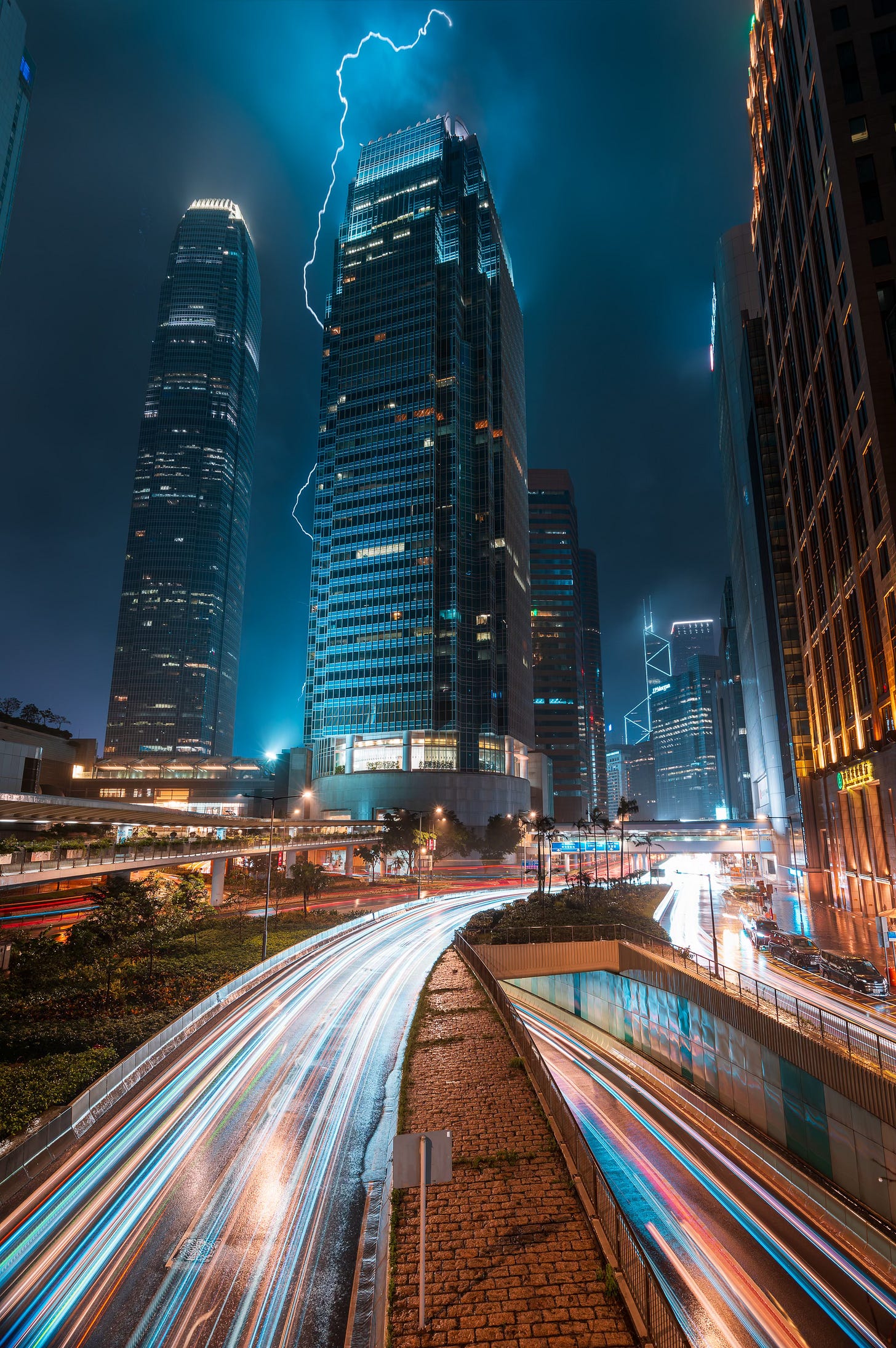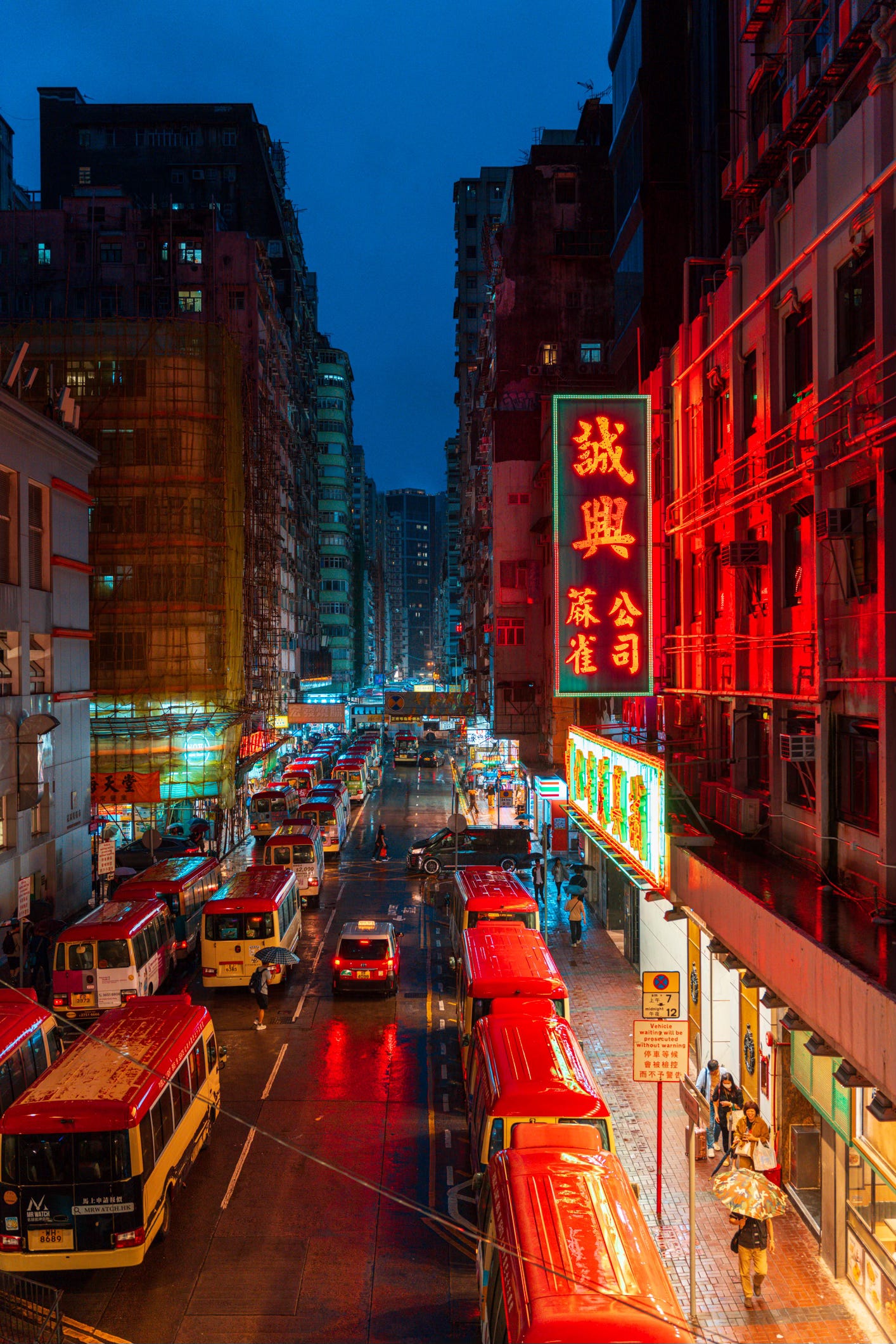A Stormy Evening at the IFC, Hong Kong – My Five Minutes of Fame
It just goes to show: photography isn’t always about skill — sometimes it’s a popularity contest.

“It’ll all turn out fine in the end.” That’s what I told my friend while in Hong Kong, convincing him to leave his comfortable home for an evening photoshoot. I promised we’d capture some iconic local scenes. Things started off well, but I had forgotten how intense the rain can be in Hong Kong. There’s no such thing as light drizzle here. The kind of spitting rain I’m used to in the UK simply doesn’t exist. In Hong Kong, when it rains, it pours.
We arrived in Mong Kok and stepped out of the clean, efficient MTR station. Just then, the skies opened. We had to weave between buildings in search of shelter, hoping the downpour would ease.
The plan was to shoot in Mong Kok, a lively residential and mixed-use area still known for its glowing neon signs and bustling street markets. These markets are made up of temporary stalls that vendors dismantle each evening, clearing the street for cleaning. Like clockwork, the stalls are back up the next morning, ready for another day of business.

What struck me was the resilience of the stallholders. No matter the weather, they open up shop. Many have adapted their stalls with umbrellas and makeshift coverings to cope with Hong Kong’s intense sun and tropical rain. Each stall reflects the owner’s individual approach to sheltering their goods, resulting in a colourful, patchwork street scene filled with personality.
The best view of this urban tapestry is from the network of pedestrian bridges criss-crossing Mong Kok. As evening fell, the market below lit up. The stalls were glowing with lights from nearby shops and their own displays, creating a chaotic but mesmerising puzzle of light and colour.

The bridge quickly filled with people - locals, tourists, and fellow photographers all sheltering from the rain and trying to get the perfect shot. I was captivated by the market and the view from above, but also felt a pang of sadness. The neon signs reminded me of an older Hong Kong, a city I had known and loved, slowly fading away.

As the rain showed no signs of stopping and the bridge became more crowded, I decided to head to another spot I’d visited on a previous trip. I wanted to photograph the IFC building in Central, a landmark that appeared in The Dark Knight by Christopher Nolan.
We made our way there through the MTR, aiming for a pedestrian bridge with a clear view of the building. Though the rain continued, it created a striking atmosphere. The wet surfaces of the road and buildings reflected the city lights beautifully, and the moisture in the air gave everything a soft, misty glow.
Just as I pressed the remote shutter for a long exposure, a loud clap of thunder rolled across the sky. A bolt of lightning struck near the IFC building at the exact moment the shutter opened. The result was a dramatic and unexpected photo.
I realised I had captured something special, though I couldn’t have known just how striking the image would turn out. I posted it on my Instagram, where it received a modest response from my small group of followers.
A few weeks later, things took a surprising turn. Sony contacted me and asked for a series of images from Hong Kong to help promote their new camera. They chose the IFC lightning photo and featured it on their official Instagram account, crediting me as the photographer.
With over 2.4 million followers, Sony’s post reached far beyond anything I’d experienced. Within minutes, I was receiving a flood of comments, likes, and new followers. My phone couldn’t keep up with the notifications.
In just a few days, the photo had gathered over 14,000 likes and lots of comments. It was overwhelming and exciting. For a brief moment, I understood the appeal of chasing digital approval. The engagement felt like a kind of validation, a sign that my work mattered.
But it also made me reflect. Why did the same photo, posted on the same platform, perform so differently depending on who shared it? Did the endorsement make it a better image? Did it suddenly make me a better photographer?
I don’t believe it did.
Don’t get me wrong, the recognition felt good. But social media metrics shouldn’t be mistaken for real achievement. My five minutes of fame didn’t change my life. I still find the greatest satisfaction in learning, improving my photography, and enjoying the process itself. That journey means more to me than chasing likes or validation online.
If you’d like to see more of my photos, you can follow me on Instagram, or explore my website.



